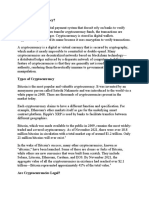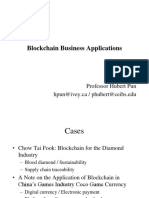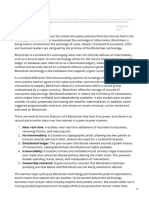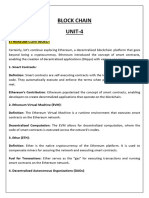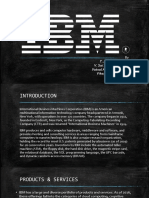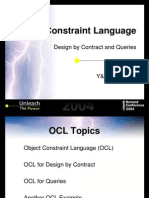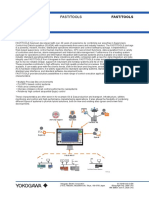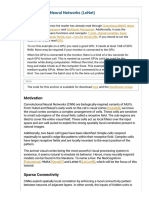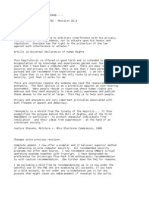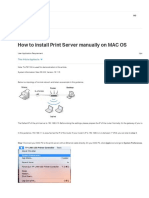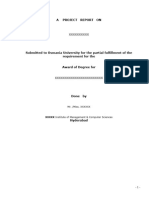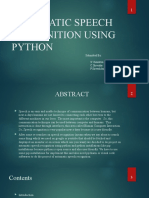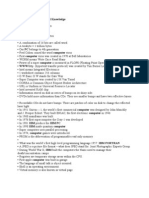0% found this document useful (0 votes)
64 views28 pagesBlockchain
The document discusses blockchain technology including its definition, types, history and applications. Blockchain can be described as a collection of linked records that are protected using cryptography. It discusses public, private and hybrid blockchains. The core components of blockchain architecture are also explained.
Uploaded by
Phương NgCopyright
© © All Rights Reserved
We take content rights seriously. If you suspect this is your content, claim it here.
Available Formats
Download as PDF, TXT or read online on Scribd
0% found this document useful (0 votes)
64 views28 pagesBlockchain
The document discusses blockchain technology including its definition, types, history and applications. Blockchain can be described as a collection of linked records that are protected using cryptography. It discusses public, private and hybrid blockchains. The core components of blockchain architecture are also explained.
Uploaded by
Phương NgCopyright
© © All Rights Reserved
We take content rights seriously. If you suspect this is your content, claim it here.
Available Formats
Download as PDF, TXT or read online on Scribd
/ 28









